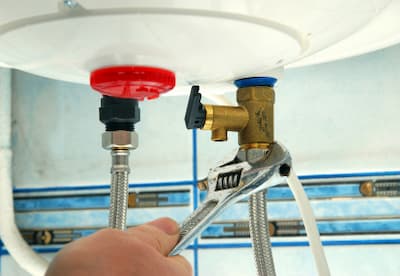We have stumbled upon the article about Tips For Maintaining Your Hot Water Heater directly below on the net and accepted it made perfect sense to quickly share it with you on this site.

Hot water is vital for day-to-day convenience, whether it's for a refreshing shower or washing meals. To guarantee your hot water system runs effectively and lasts much longer, normal upkeep is key. This short article supplies sensible suggestions and insights on exactly how to keep your home's warm water system to stay clear of disruptions and costly repair work.
Intro
Maintaining your home's hot water system might appear complicated, yet with a couple of straightforward steps, you can ensure it operates smoothly for years to come. This guide covers everything from comprehending your warm water system to do it yourself upkeep pointers and recognizing when to call in professional help.
Importance of Preserving Your Hot Water System
Routine maintenance not only extends the lifespan of your warm water system yet also ensures it runs successfully. Disregarding upkeep can cause reduced effectiveness, greater energy bills, and even early failing of the system.
Indications Your Hot Water System Needs Maintenance
Knowing when your hot water system requires interest can avoid major issues. Keep an eye out for signs such as irregular water temperature level, unusual noises from the heating system, or corroded water.
Flushing the Water Heater
Purging your water heater removes sediment build-up, enhancing efficiency and lengthening its life.
Checking and Changing Anode Rods
Anode rods prevent corrosion inside the container. Examining and replacing them when broken is vital.
Complicated Issues Calling For Expert Help
Instances include major leakages, electrical problems, or if your hot water heater is regularly underperforming.
Regular Expert Upkeep Perks
Professional upkeep can consist of comprehensive examinations, tune-ups, and making sure compliance with security standards.
Checking and Readjusting Temperature Setups
Adjusting the temperature level settings makes sure optimal efficiency and security.
Do It Yourself Tips for Maintenance
You can execute several upkeep tasks yourself to maintain your hot water system in leading condition.
Looking for Leaks
On a regular basis examine pipelines and links for leakages, as these can bring about water damage and greater costs.
Comprehending Your Warm Water System
Before diving into maintenance jobs, it's helpful to comprehend the standard components of your warm water system. Typically, this consists of the water heater itself, pipelines, anode rods, and temperature level controls.
Regular Monthly Upkeep Tasks
Routine monthly checks can aid capture minor concerns before they escalate.
Checking Pressure Alleviation Valves
Evaluating the stress safety valve ensures it functions appropriately and prevents extreme stress build-up.
Protecting Pipelines
Shielding hot water pipes decreases warm loss and can conserve power.
When to Call a Specialist
While DIY maintenance is helpful, some concerns call for specialist knowledge.
Final thought
Routine maintenance of your home's hot water system is crucial for effectiveness, longevity, and price savings. By complying with these pointers and knowing when to seek professional help, you can guarantee a trustworthy supply of warm water without unexpected interruptions.
How to Maintain an Instant Hot Water Heater
Before tinkering with your hot water heater, make sure that it’s not powered on. You also have to turn off the main circuit breaker and shut off the main gas line to prevent accidents. Also turn off the water valves connected to your unit to prevent water from flowing into and out of the appliance. 2. When you’re done, you have to detach the purge valves’ caps. These look like the letter “T” and are situated on either side of the water valves. Doing so will release any pressure that has accumulated inside the valves while at the same time avoid hot water from shooting out and burning your skin. 3. When the purge valves’ caps are removed, you have to connect your hosing lines to the valves. Your unit should have come with three hoses but if it didn’t, you can purchase these things from any hardware or home repair shops. You can also get them from retail stores that sell water heating systems. Read the user’s manual and follow it to complete this task properly. When the hosing lines are connected, open the purge port’s valves. 4. You should never use harsh chemical cleaners or solutions when cleaning your unit. Make use of white vinegar instead. It should be undiluted and you’ll probably use about 2 gallons. 5. Now flush your water heater. This task should probably take about 40 minutes. We can’t give you specific directions for this because the procedure is carried out depending on the type, model and brand of your heater. With that being said, refer to the user’s manual. 6. When you’re done draining the unit, you have to turn off the purge port valves again. Remove the hosing lines that you earlier installed on each of the water valves. Put the valve caps (purge port) back in their respective places and be very careful so as not to damage the rubber discs that are found inside these caps. 7. Now that everything’s back in place, check your user’s manual again to find out how to reactivate your water heating system. 8. Once it is working, turn one of your hot water faucets on just to let air pass through the heater’s water supply pipes. Leave the tap on until water flows smoothly out of it. https://www.orrplumbing.com/blog/2014/september/how-to-maintain-an-instant-hot-water-heater/

As a devoted reader about How to Maintain a Hot Water Heater in a Few Simple Steps, I figured sharing that piece of content was sensible. Liked our piece? Please quickly share it. Help someone else check it out. Thanks for your time invested reading it.
Book Service Now